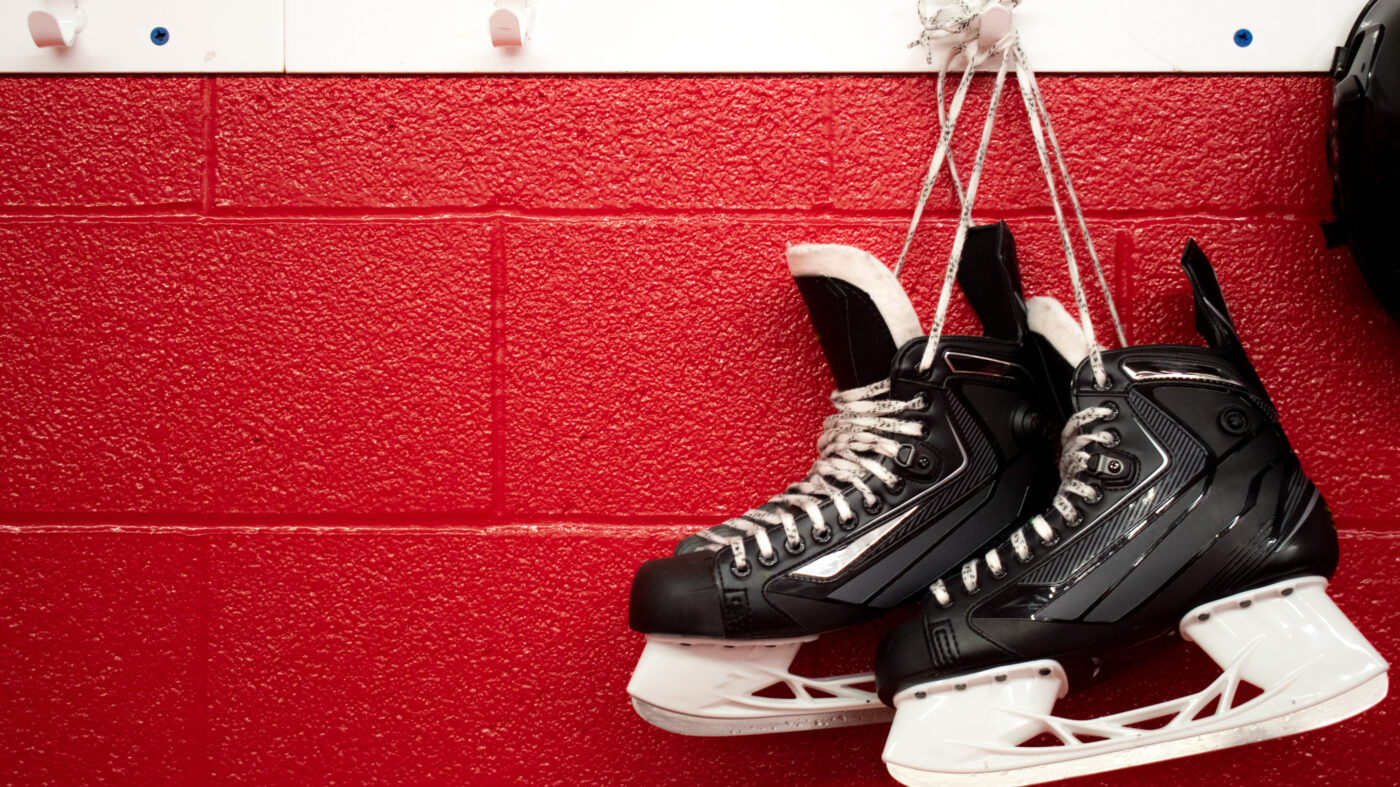In Business the NHL Way: Lessons from the Fastest Game on Ice, authors Norm O’Reilly and Rick Burton borrow a page from Moneyball
CCBJ: Can you briefly talk about yourselves and why you wrote this book?
Norm O’Reilly: I’m the dean of the Graduate School of Business at the University of Maine and a professor of sport management there. Rick and I have been writing together for over 15 years, including currently a regular column for Sport Business Journal (SBJ). We’ve co-authored a number of academic articles and three books. Business the NHL Way is our most recent effort. During COVID we had time on our hands and we reflected on the idea of doing a book that’s very different from anything we’d done before. It’s really in the Moneyball ilk—actionable insights through data analytics.
The National Hockey League is an enormous financial success story. They’ve grown their revenues to nearly six billion dollars under a commissioner who’s been a stalwart leader for three decades. We really wanted to see what we, as business and sport management professors, could learn from the sport that’s had unbridled business success, and to share that with industry professionals, entrepreneurs, corporate people, owners of companies, etc.
Rick Burton: I’m the David B. Falk professor of sport management at Syracuse University, where I have been since 2009. One of the things that makes Norm and me interesting as academicians, and also as authors, is that we’ve actually lived out in the business world that we write about. Norm is a partner in a thriving agency in Canada called T1, and I was the commissioner of a professional basketball league in Australia as well as the chief marketing officer of the US Olympic Committee for the Beijing Summer Olympics. So any topic we work on together we keep in mind how our writing can apply to a practitioner as well as a student, faculty member or administrator. We’re trying to combine considerable research with a real-world perspective, having lived it out on the mean streets.
Talk to me a little bit about what makes professional hockey so translatable to the business world.
O’Reilly: Hockey is a game that’s fast, exciting, still relevant to Millennials and Gen Xers, and growing. It’s also got a global footprint—maybe not at the level of a soccer, basketball or mixed martial arts, but right behind them. In fact, we predicted a number of years ago that hockey could pass Major League Baseball as the number three sport in North America. In short, there’s a lot of upside potential.
We felt there’s really a lot we could learn from the sport: around brand and leadership, business model dynamics and innovation, and some of what they’ve done to reach into new markets. There are a lot of stories, the Southern US being probably the greatest example of how a non-hockey playing area with no hockey culture or background has come to be home to vibrant NHL franchises and hundreds of thousands of kids playing the sport, with a really exciting growth trajectory ahead of it.
Burton: You may be thinking that football, basketball and baseball are bigger and asking yourself, “Why they would pick hockey?” Part of the reason is that Norm and I are both of Canadian heritage and we both played it growing up. But mostly it’s the nature of play.
In football, only half the players play at a time. They will play offense, and the other half of the team will play defense, and they are not out on the field at the same time. Also, only two or three players ever come in contact with the ball. In baseball, your nine starting players generally will play the entire game, but when a team is on the field, all nine are out fielding, but then they all come in and sit in the dugout and only one of them bats. In basketball the five players that start the game generally play the majority of the minutes, and the bench players don’t really play much at all.
What’s wonderful about hockey is that if you make a roster, you’re going to skate a lot of minutes, every game, all the time. The average NHL shift—meaning the length of time that a player is on the ice—is only about 52 seconds. And then that player will shift off the ice and a new player will come on. But 52 seconds later, that player will shift off, and another one will come on, and they will rotate like that for 60 full minutes of play. It requires a different kind of camaraderie, bonding and commitment to team that we found fascinating.
What has the NHL done that other leagues have failed to capitalize on?
O’Reilly: It’s probably more accurate to say they’ve been first movers in some areas. One that we talk about in the book is Las Vegas. All the major North American sport leagues have been eyeing Las Vegas for a number of years. It’s grown faster than any other Western city in recent years. It’s an attractive place, a tourism mecca and there are a lot of very wealthy individuals there who could be potential owners. There’s the links to the casinos and shows, and plenty of relatively inexpensive flights to and from the city. But while the other leagues hemmed and hawed, the NHL moved very quickly, were the first in there; and got a great foothold. The Vegas Gold Knights are a great story.
We also talk in the book about copycatting. What the NHL has been brilliant at is looking at what other leagues are doing. Fifteen years ago the NHL lost an entire season. No Stanley Cup was awarded because of a lockout. The collective bargaining led to a complete resetting of the league and how it operates. The players lost as much as a billion dollars in salary that was not paid out to them. The owners, for their part, didn’t collect any revenue. So what did they do? They looked at the NFL which, in terms of profit, is unquestionably at the top of the heap. They looked at their model of revenue sharing, their collective approach to performance, how they make sure all the teams are competitive year over year—competitive balance, we call it—and they copied that strategy. They were very, very smart to look at other models out there and adapt—at huge risk—and that has led to 17 years of incredible business success.
Burton: What’s important to note is framework or context. The NFL is a much bigger league, but the game is not played worldwide; in fact, it’s played in very few countries. Baseball is also bigger (at the moment) and has somewhat of a global footprint, but it’s been in and out of the Olympics in the past two decades., and while it has great strength and traditions, younger demographics appear to find the game, which averages three hours and ten minutes, slow.
Basketball, on the other hand, is a true global titan. The NBA has been spectacular at making the game visible and attracting players from all over the world—and we think the NHL has some of that same thinking going on. (Commissioner Gary Bettman started his sports career at the NBA before moving over to the NHL.) Look at the NHL’s growing popularity in Scandinavia and Northern Europe, and how it’s starting to come into its own in China and Korea. There’s a lot to like about how the NHL has seized opportunities to grow its value, from the Olympics to the World Hockey Championships.
The NHL has $5 billion in revenue. Are its lessons applicable to those who aren’t running large businesses?
Burton: We wanted this book to work for those running businesses of any size—or even working as an employee. What we saw with the NHL was that regardless of the amount of revenue the league does or the teams generate, there’s value in peering inside an organization showing really notable growth, then asking what someone who, say, owns or works at a tool-and-die shop can learn from how the NHL operates and its players conduct themselves. There are a lot of ways to use topics common in the game of hockey and then to extrapolate concepts from there.
For example, fighting is not unknown in hockey. In fact, it’s a part of the game. While there are penalties, it has not been outlawed. While there is no tolerance for physical fights in the workplace, conflicts are commonplace. We talk about conflict on the ice, where things are oftentimes settled with fists, and then translate that to the employee in an accounting firm that can’t stand their coworker in the adjacent cubicle. We give readers a new way of thinking about how to manage or resolve the conflict. That’s just one example where we get away from the issue of revenue and size of a business to a more common issue bedeviling the workplace.
O’Reilly: Another example would be the “Veterans Matter” chapter, which has implications for a lot of the talent challenges business owners and managers, particularly at smaller organizations, are facing. While the NHL’s revenues are $6 billion, after paying players’ salaries there’s not a lot left for staff. Moreover, the NHL is made up of 32 clubs which, taken individually, are small to medium-size enterprises—another reason our book is applicable to the small business operator.
Burton: So here’s our thought on veteran players. In the NHL, it’s common to see players between the age of 35 and 40 still on rosters, which is considered really old by pro sports standards. We did a case study on a veteran player Boston Bruins’ Zdeno Chára, and specifically his value to young players. There are hundreds of other examples that we could have used. For Millennials who might gravitate to this book, we also reference the movie, The Intern, starring Robert De Niro, about a retired businessman who becomes a senior intern, to drive home the point that experience and wisdom may be of value.
Hockey is rapidly becoming more diverse. What Role has the NHL played play in creating a more diverse and inclusive workforce and what lessons can be learned?
O’Reilly: While the NHL has not yet achieved its diversity and inclusion goals, the organization has made wonderful steps, however not at the level of what’s happening with Hockey Canada, where a lot of challenges diversity-wise have spurred the sport’s national governing body to begin addressing systemic issues. In our book, we dig into this in a couple of the chapters: one around women in sport, and specifically Manon Rhéaume, the first woman NHL player, who signed a contract with the Tampa Bay Lightning back in the early ‘90s; and a chapter on Don Cherry, the popular but controversial hockey commentator who lost his job after some ill-considered comments that may have been OK in the past but no more.
We also get into some racial and sexual harassment issues that have not been adequately addressed by male-dominated leadership at some teams. The NHL recognizes that DEI is the way the league needs to go and the sport needs to change.
Burton: Commissioner Bettman has made it a priority of his senior administrative team to seize every opportunity to promote the league’s commitment to diversity, inclusion and accessibility. We also write about paralympic, or sledge, hockey as well as the women’s pro league. While the sport is still dominated by white males, it’s the view of NHL leadership that this is something they can change going forward. We’ve already have an NHL team’s first black general manager and first black play-by-play broadcaster. These firsts are happening with regularity. Our book also addresses NHL players’ different backgrounds and professional progressions, talked about The Black Women’s Hockey Club, the growing number of black players in the NHL, and how teams and players across the NHL spoke out against racial injustice in the wake of George Floyd's death. However, all these developments have to be framed in the context of the NHL trailing other leagues on these issues.
For years the NHL was considered behind the times—too regional, too violent, and having terrible TV deals. When and how did all of that change?
O’Reilly: The NHL is now back on ESPN, has a big deal in Canada with Sportsnet, and is getting record revenues from those pieces. So, the regionality-of-coverage issue has disappeared. The league has also embraced eSports streaming platforms and has partnered with MLBAM, Major League Baseball’s Internet and interactive branch, to provide digital support.
On the issue of violence—this a very aggressive game, fighting aside—we talk a lot in the book about spinning your products with your target market. In the 1950s, ‘60s and ‘70s, hockey’s predominantly male fan base was as interested in seeing fisticuffs as they were a hockey game. That has changed as the sport has attracted more families, women and kids.
Ongoing rule changes also have drastically reduced drastically the amount of fighting, including the number of hitting-from-behind, aggressive plays, which carry more penalties. The rule changes also make the game faster, more exciting, and higher scoring, all of which attract more spectators. They’ve created a product that’s more in tune with today’s market.
Burton: Also, there is, and will continue to be, a market for the violence that is a natural part of every sport. Mixed martial arts is seeing massive growth. In baseball, someone throwing a 100-mph fastball in the vicinity of someone’s head, or a or a player sliding into second base with their spikes up always gets the crowd going. In basketball, there’s the the massive slam dunk with one player throwing it down on top of a poor, helpless defender. Then there’s the all-out, violence of American football, where the collisions and contacts are the equivalent of car wrecks. Hockey also has its collisions and checking into the boards and fights which add to the game’s appeal.
Published December 23, 2022.





